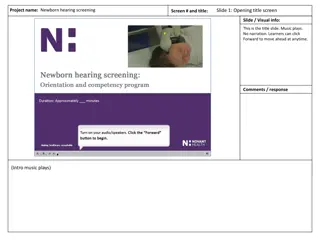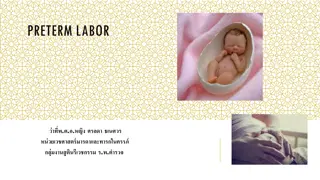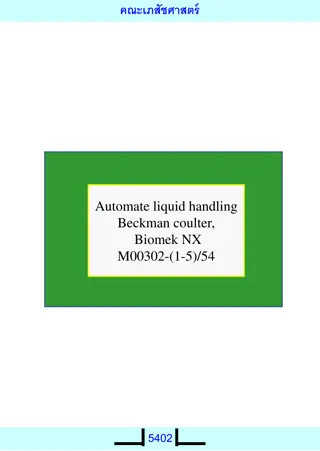Understanding Infant Incubators: Essential Information for Newborn Care
Infant incubators play a crucial role in maintaining a healthy environment for newborn babies, especially premature or sick full-term infants. These devices control temperature, humidity, and oxygen levels to create a neutral environment that supports optimal growth and development. This article covers the purpose, design, and usage of infant incubators, highlighting key features such as temperature regulation, humidity control, and infection prevention. Important considerations for monitoring and maintaining the incubator settings are also provided to ensure the well-being of the babies inside.
Uploaded on Sep 29, 2024 | 0 Views
Download Presentation

Please find below an Image/Link to download the presentation.
The content on the website is provided AS IS for your information and personal use only. It may not be sold, licensed, or shared on other websites without obtaining consent from the author. Download presentation by click this link. If you encounter any issues during the download, it is possible that the publisher has removed the file from their server.
E N D
Presentation Transcript
Experiment no. 3 Infant Incubators Asst. Lect. Mays Khalid
Infant incubators maintain a healthy environment for newborn babies. They are used for premature babies which are still small and weak as well as for some sick full-term babies. Incubators are used in the primary care department of a hospital or in the neonatal intensive care unit, NICU Infant incubators should not be confused with laboratory incubators, which are used to keep reagents or samples warm.
Purpose The incubator consists of a transparent cabinet in which the baby is kept in a neutral environment for medical care. Neutral means, that the surrounding air has the optimal temperature and moisture and the baby only needs minimum of energy to maintain normal body temperature.
The infant incubator controls the temperature controls the humidity can deliver additional oxygen protects against infections and diseases protects against noise
In order maintain the body temperature of the baby (36 - 37.2 C) the incubator must be able to create an ambient air of 34 - 38 C with a humidity of 40 - 80%.
A fan blows filtered ambient air over a heating element and a water container Through a control valve additional oxygen can be supplied to the air The moistened, heated and enriched air now flows into the above cabinet with the baby. One part of the air escapes from the cabinet through vent holes, another part gets back into the air processing. Humidity and oxygen concentration are usually controlled manually by the nurse. an alarm is given when the fan does not turn in case the power fails Design
The usage of an infant incubator is not difficult and the functions should be self-explanatory. Nevertheless the technician and the user have to read the user manual carefully before usage. A missing user manual should be available from the manufacturer or from the Internet. In addition to the instruction of the manufacturer here some general hints: Check and record the temperature every 5 hours and hourly in a critical care stage. Default air temperature in the incubator is 35 C. The setting for the humidity for small babies is 70 - 80% in the beginning, later 40%. Use distilled water only. It has to be drained and renewed every day. Usage























